By now, you’re probably familiar with Magic’s newest format, Pioneer. (If you haven’t heard of it or need a refresher, check out our intro article.) We’re here today to talk about one of my favorite decks to emerge in Pioneer thus far: Sultai Midrange.
Sultai is your classic midrange deck, featuring a suite of interaction, flush with versatile and adaptable cards. Playing the most powerful cards at each spot on the curve allows the deck to beat your opponent on raw card quality without needing to depend on strong synergies.
Sultai aims to trade one for one with your opponent’s resources while pulling ahead with incrementally larger value engines until you can slam the door with a Planeswalker’s ultimate. Pioneer lacks powerful card selection spells like Ponder and Brainstorm, which makes the redundancy of the Abrupt Decay/Assassin’s Trophy/Thoughtseize package quite appealing, as they all tend to be good at any point in the game.
Here’s a list that Adriano Sol played to a 7-1 finish in the last MTGO Pioneer Challenge.
2 Liliana, the Last Hope
2 Nissa, Vital Force
4 Oko, Thief of Crowns
2 Vraska, Golgari Queen
4 Jace, Vryn’s Prodigy
1 Kalitas, Traitor of Ghet
2 Scavenging Ooze
2 Tasigur, the Golden Fang
2 Tireless Tracker
2 Thought Erasure
4 Thoughtseize
4 Abrupt Decay
1 Assassin’s Trophy
4 Fatal Push
4 Blooming Marsh
2 Botanical Sanctum
1 Breeding Pool
4 Fabled Passage
2 Forest
1 Hissing Quagmire
1 Island
4 Overgrown Tomb
2 Swamp
3 Watery Grave
Sideboard:
1 Kalitas, Traitor of Ghet
1 Assassin’s Trophy
1 Dimir Charm
1 Dragonlord Silumgar
2 Mystical Dispute
2 Negate
2 Noxious Grasp
2 Ob Nixilis’s Cruelty
1 Questing Beast
2 Veil of Summer*
Editor’s Note: This post was published on November 8, 2019. Veil of Summer was banned in Pioneer on November 11th.
Core Cards
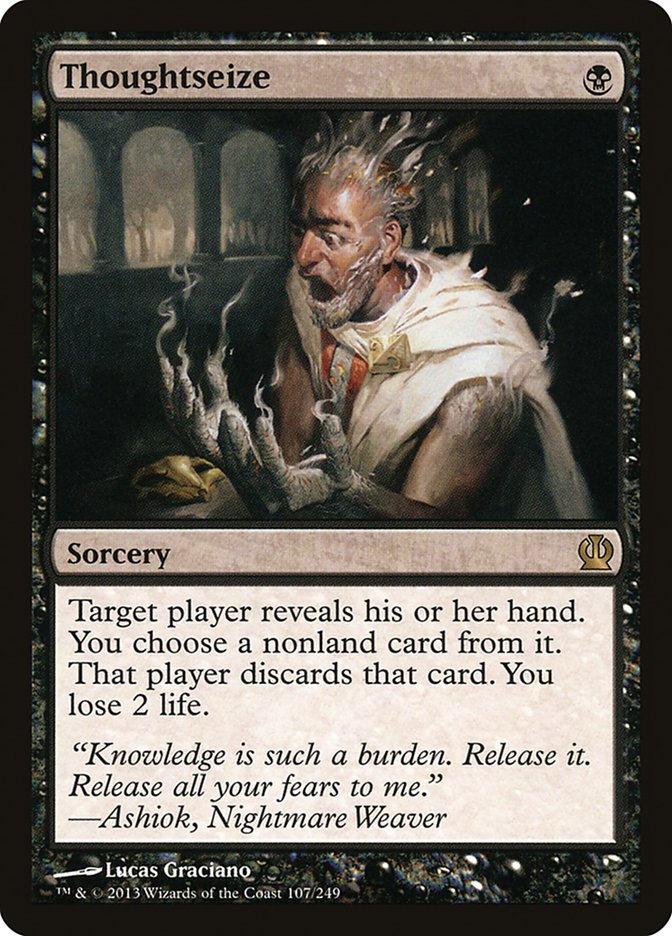
Thoughtseize has been a midrange staple since Lorwyn. Busting a hole in your opponent’s curve or game plan is well above the cost of a single black mana and two life. Pioneer players seem to be swooning over various combo decks during the infancy of the format, but these combos have one fatal flaw: without good cantrips, they’re rather inconsistent. Thoughtseize is at its best when the opponent is looking to assemble two or three specific cards to try and win the game, as taking one piece often leaves the others less useful, or even dead.
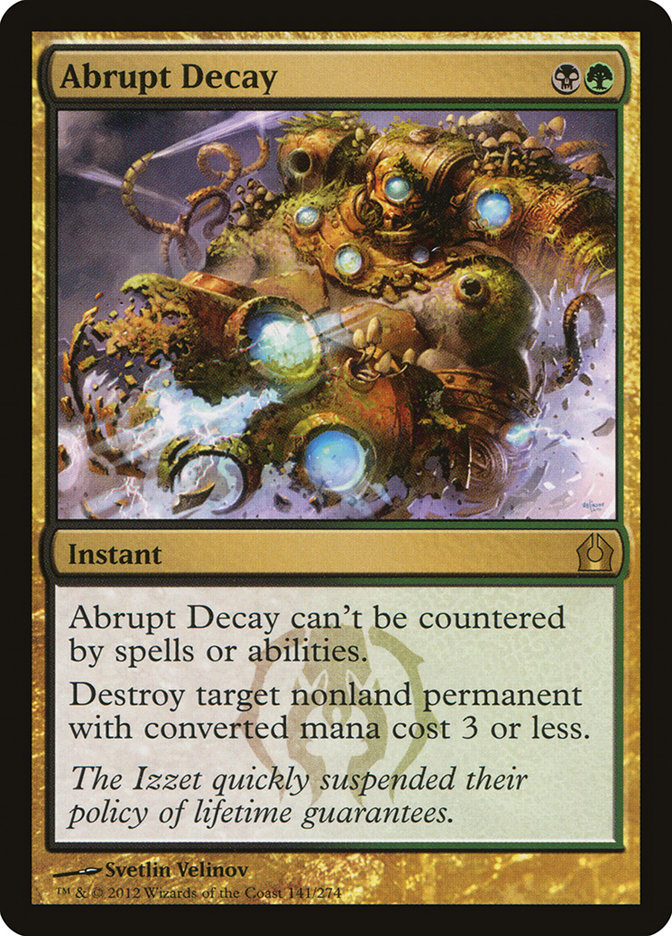
Abrupt Decay graced the Magic world in 2012 and changed B/G/X decks forever. Gone are the days where you have to agonize over specific “answer” cards; Abrupt Decay takes care of most of your problems in non-Standard formats. Three or four copies of Abrupt Decay is an excellent place to start in Pioneer.
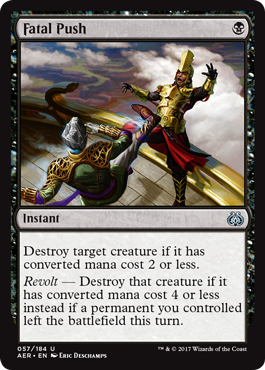
Aether Revolt brought us Fatal Push, which I believe to be the best removal spell printed since Abrupt Decay. Cleaning up any small creature for one mana is a deal which gets even sweeter when you can turn on revolt to tackle mid-sized creatures. Revolt is harder to enable in Pioneer than in Modern or Legacy, so you have to be a bit smarter about holding onto Fabled Passage. However, food tokens from Oko, and clues from Tireless Tracker also give the deck ways to turn Fatal Push into Terminate.
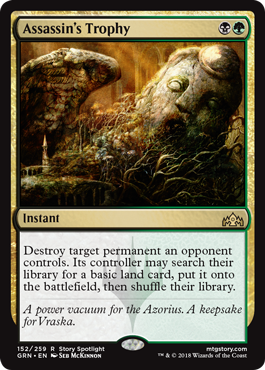
Assassin’s Trophy was hailed as the second coming of Abrupt Decay when it was first spoiled, but it hasn’t quite lived up to that hype. Don’t worry, Trophy still is not only a starter, but is quite important, as it gives us outs to absolutely any permanent our opponent can play. Suddenly, cards like Field of the Dead, Vraska, Golgari Queen, and Ghalta, Primal Hunter aren’t as scary when you have a couple copies of Assassin’s Trophy in the deck.
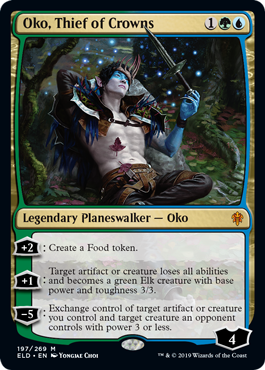
Oko, Thief of Crowns is our primary reason to play blue. All of the modes are useful: generating food to pad our life total and enable revolt, neutralizing an opposing threat while generating an elk army, and even getting to Mind Control small, value creatures. Answering opposing threats while generating value every turn is something that Sultai is very interested in doing.
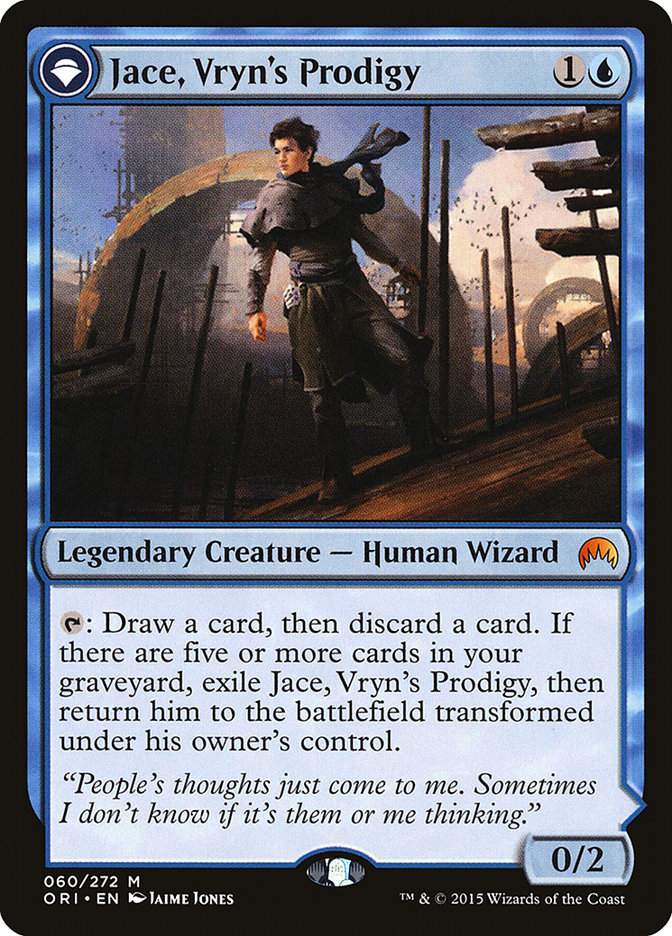
Jace, Vryn’s Prodigy is the last core card in the deck. Planeswalkers just don’t get more efficient than two mana, and Jace fits the bill while sculpting your hand in the process. Sultai is dying for Snapcaster Mage to squeeze extra value out of our spells; Jace does an excellent impression while having a game-winning ultimate.
Flex Spots
Every deck is going to have flex spots, and in midrange decks, they tend to be more important than normal. These slots are often where you have the ability to adjust to keep up with the ever-changing metagame. Let’s take a look at some of the more common choices for Sultai.

Tireless Tracker is right on brand for Sultai. A creature that keeps the cards flowing and grows to finish the game quickly will make the deck in all but the fastest metagames.

Vraska, Golgari Queen is an excellent choice if you want card draw, revolt triggers, and a removal spell that sticks around. Four mana is a little pricey for the perceived speed of Pioneer, but Sultai is trying to slow the game down, so I can see this card making the deck in small numbers.
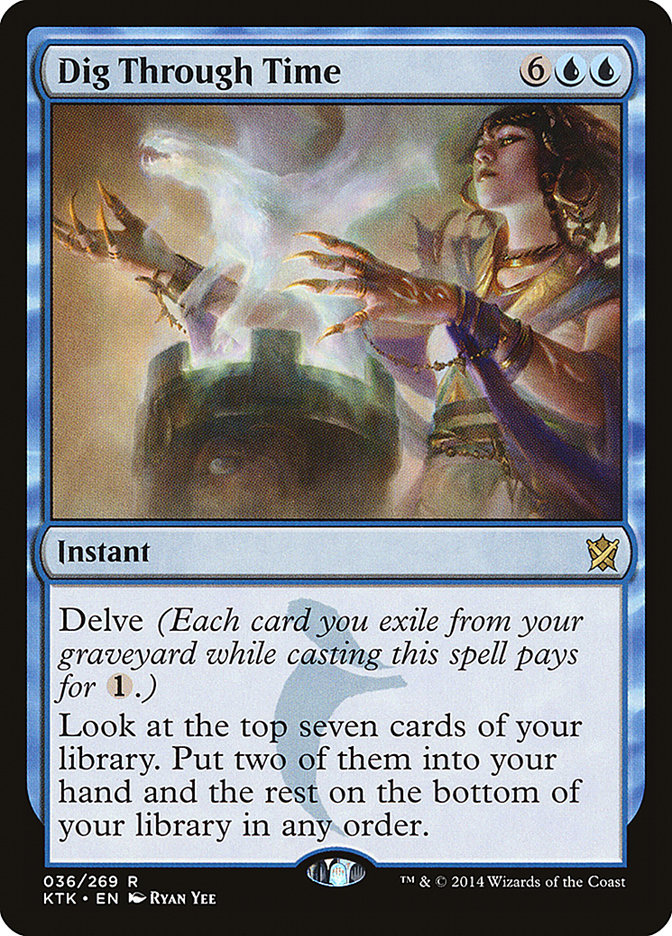
Dig Through Time was once thought of as a slam dunk include, but after some testing, I’ve found it to be a bit clunky. Just like Vraska, Dig Through Time is likely to take over games when things slow down. As the format leans out and cards go into the graveyard at a faster rate, Dig might make the cut in higher numbers.
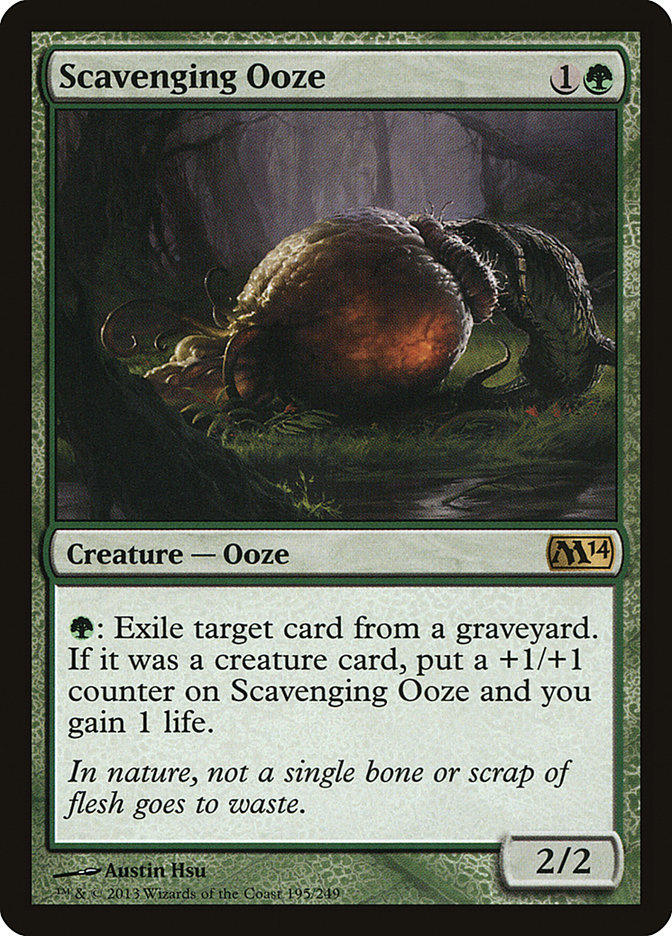
Scavenging Ooze has proven that it has the chops to see plenty of Modern play, so I imagine it’ll be a Pioneer mainstay as well. We’ve already seen graveyard decks like Izzet Phoenix and Rally the Ancestors, which provide Scavenging Ooze with plenty of food.
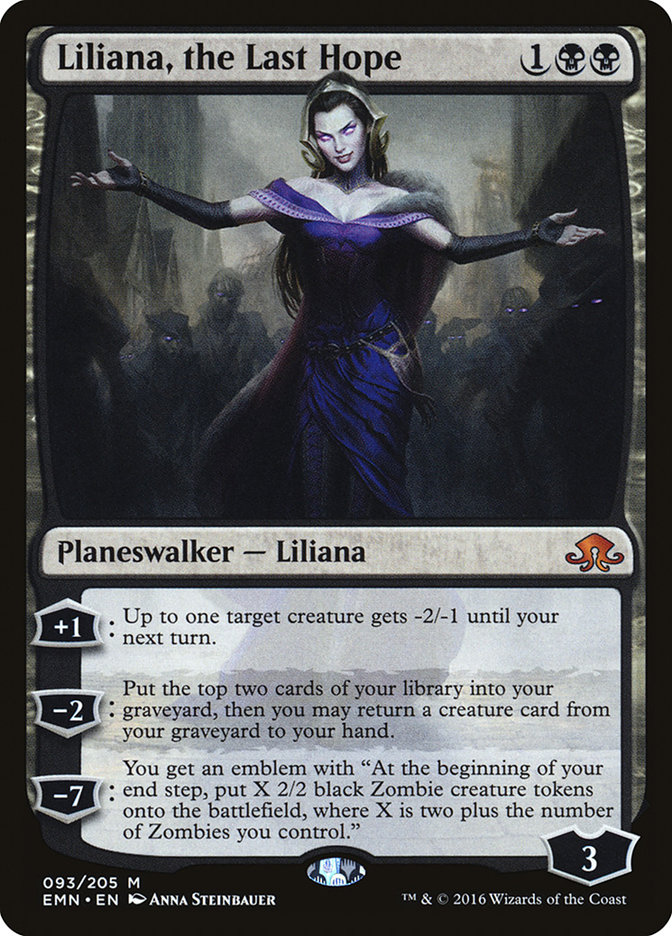
Liliana, the Last Hope excels in metagames that have either a lot of interaction, or a lot of small creatures – which, as it turns out, is true of most metagames. Expect to see a few copies floating around in Sultai lists.
Good Matchups
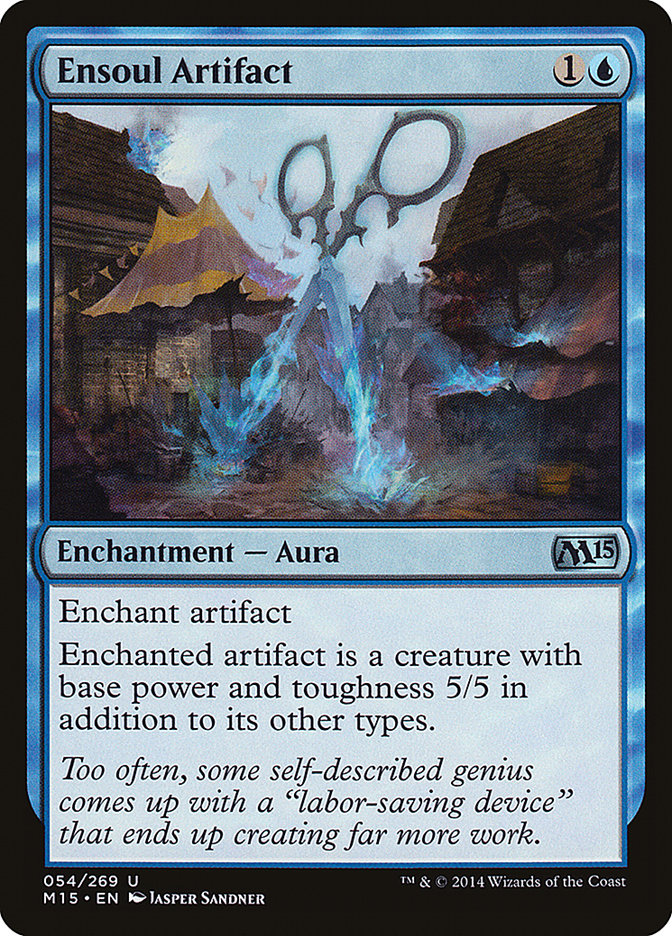
Most builds of Sultai will beat up on creature decks, including Izzet Ensoul, Vampires, and Bant Spirits. The wealth of interaction and removal spells in Sultai really punishes anyone trying to play to the board and win through combat.
Though Felidar Guardian is banned, Sultai tends to succeed against these “A + B” combo decks thanks to Thoughtseize. Combo decks that rely on specific permanents are also usually vulnerable to Abrupt Decay and Assassin’s Trophy.
Bad Matchups
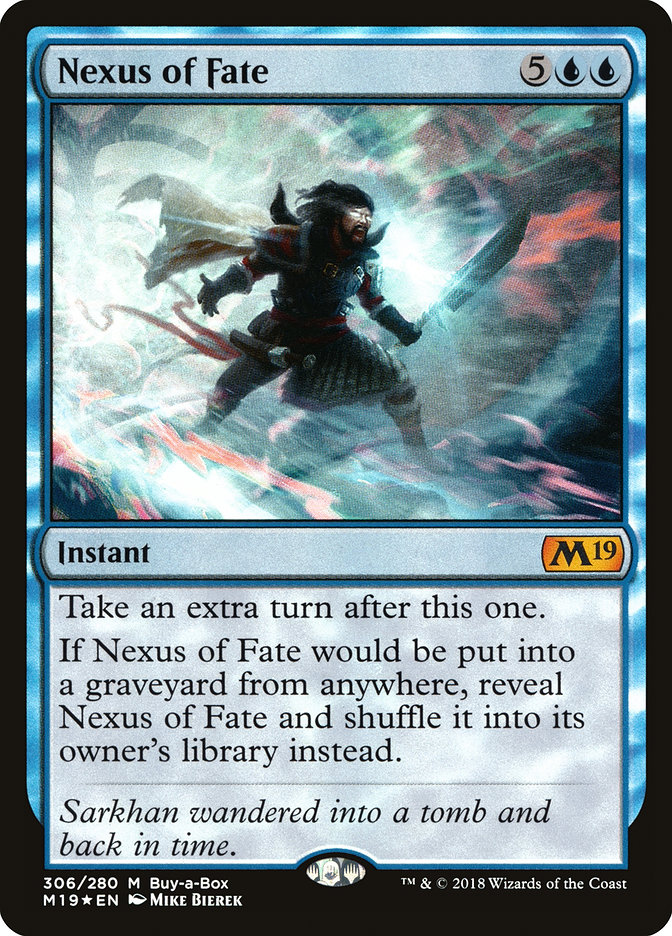
Sultai tends to struggle with decks that go over the top or decks that mostly play on the stack. These include decks like Mono-Green Ramp, Simic Nexus, and Burn. Cards like Ugin the Spirit Dragon and Ulamog, the Ceaseless Hunger are problematic because they’re immune to most removal spells, and because they generate value the turn you cast them. Nexus of Fate requires stack-based interaction or a fast clock to take down, neither of which are really in Sultai’s wheelhouse. Burn is rather homogeneous in its card choices, which takes a lot of strength away from Thoughtseize, and without a good amount of life gain, things can get hairy.
Conclusion
Sultai seems like an excellent choice for Pioneer now, and it may continue to be successful as the metagame evolves. I plan to revisit Sultai as it carves out it’s spot in a more solidified metagame. Until next time, keep grinding!

Michael Rapp is a Modern specialist who favors Thoughtseize decks. Magic sates his desire for competition and constant improvement.

